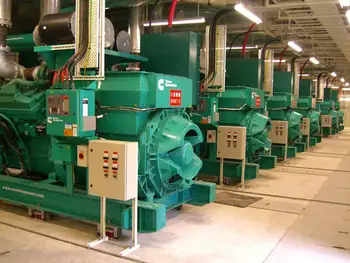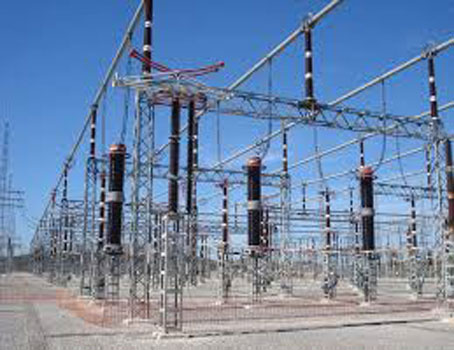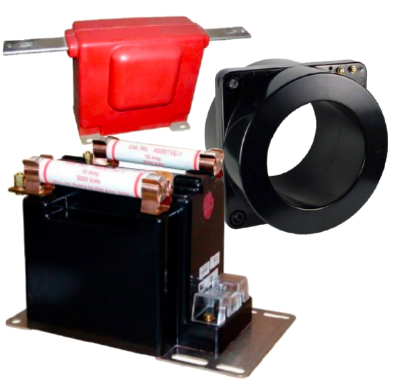Understanding Your UPS Power Supply - Uninterruptible Electricity

Emergency Generators & Standby Power Systems
Our customized live online or in‑person group training can be delivered to your staff at your location.

- Live Online
- 12 hours Instructor-led
- Group Training Available
Download Our NFPA 70E Fact Sheet – 2024 Electrical Safety Edition

- Understand how NFPA 70E works with NEC and NFPA 70B standards
- Clarify the shared responsibility between employers and employees
- Learn how NFPA 70E supports OSHA compliance
UPS power supply ensures uninterruptible power, voltage regulation, and surge protection with battery backup, inverter, and AVR, delivering clean sine-wave output for servers, networking gear, and industrial controls during outages and brownouts.
What Is a UPS Power Supply?
A backup system delivering regulated AC via inverter and ATS, keeping critical loads online during outages.
✅ Types: offline, line-interactive, double-conversion
✅ Features: AVR, surge suppression, pure sine wave
✅ Metrics: VA rating, runtime, transfer time, THD
WHAT IS A UPS POWER SUPPLY?
An Uninterruptible Power Supply (UPS) System is a device that supplies battery backup power to computers and peripherals during short power outages, and allows systems to safely shutdown during prolonged blackouts. UPS systems also correct brownouts and overvoltages, stop damaging power surges and filter disruptive line noise. An Uninterruptible Power Supply system sits between a power supply (e.g. a wall outlet) and a device (e.g. a computer) to prevent undesired features of the power source (outages, sags, surges, bad harmonics, etc.) from the supply from adversely affecting the performance of the device. For a deeper primer, consult what a UPS system entails to see how architectures differ.
WHAT CAUSES POWER PROBLEMS?
Despite advances in technology, power grids across the country are struggling to supply reliable power to homes and businesses. The increasing occurrence of large natural disasters such as Hurricane Katrina, along with the growing demand for electricity, have put a significant strain on power grids and an increase in damaging power problems. If your home office or business has ever been disrupted by a power problem, it’s not surprising. IBM estimates that 120 power problems hit the typical computer in a month—that works out to four per day! As a result, computer systems and electronics are under siege by more frequent blackouts, brownouts, overvoltages, surges and other power anomalies. Thanks to the aging of the nation’s power-producing infrastructure, these power problems are likely to become more and more common in the coming years. Local sources can also generate blackouts, brownouts, overvoltages and surges. For example, if your neighbor starts up an electrical motor or the office on the floor below you blows a fuse, a blackout, brownout, overvoltage or surge could result. Line noise is typically generated by turning on other power-drawing devices connected to the same electrical system. Turning on florescent lights, laser printers or appliances, working near a radio station, using a power generator or simply working during a lightning storm can all introduce line noise into connected equipment. Ever notice the “snow” on your TV when you use a blender or a hair dryer? That’s line noise being sent back into your electrical system and into your TV. To understand how these disturbances are measured and mitigated, review UPS fundamentals for context on sizing and topology.
Sign Up for Electricity Forum’s Generators/UPS Newsletter
Stay informed with our FREE Generators/UPS Newsletter — get the latest news, breakthrough technologies, and expert insights, delivered straight to your inbox.
Visit Our UPS System Training Page
WHAT ARE THE EFFECTS OF POWER PROBLEMS?
Blackouts, brownouts, power surges and line noise can result in computer system downtime or lockups, data loss, lost productivity, audio static, video snow, slow electronic degradation and ultimately catastrophic equipment damage. Additionally, organizations should be aware of UPS risks so mitigation plans cover maintenance, ventilation, and load management.
HOW DOES A UPS POWER SUPPLY WORK TO PROTECT AGAINST POWER PROBLEMS?
An Uninterruptible Power Supply System provides comprehensive protection against all power problems. To further understand how UPS Systems protect against power problems, consider the different types of UPS: A concise overview of modes and components is outlined in this Uninterruptible Power Supply reference for quick comparison.
STANDBY UPS POWER SUPPLY
Power is fed through surge and noise suppression circuitry and on to your equipment. Meanwhile, a battery charger keeps an internal battery topped off and ready for use. During a blackout, brownout or overvoltage, an inverter converts battery power into a simulated sine wave output. When power returns, the Uninterruptible Power Supply switches back to AC power and the battery is recharged. Sensing of a low-voltage situation and switching to battery power happens so quickly that your equipment continues to operate flawlessly.
LINE-INTERACTIVE UPS POWER SUPPLY
Power is fed through surge and noise suppression circuitry. Then built-in line conditioning circuitry regulates high or low voltages back to normal levels, and sends clean power on to your equipment, without using battery power. Meanwhile, a battery charger keeps an internal battery topped off and ready for use. During a blackout, an inverter switches on and converts battery power into a simulated sine wave output. When power returns, the inverter switches off and the battery is recharged. Because all switching happens within a few milliseconds, your equipment is unaffected.
ON-LINE UPS SYSTEMS
This is the highest level of battery backup protection available. Power is first broken down and then perfectly reconstructed by the inverter, which is “on-line” 100% of the time. There is absolutely no transfer switching time. This process completely eliminates incoming surge and line noise, adjusts high or low voltages, and produces perfect sine wave power. When energy costs matter, explore high-efficiency UPS strategies that reduce heat and operating expense.
IMPORTANT UPS POWER SUPPLY FEATURES
There are a number of other factors important to UPS users beyond its standby, line-interactive or on-line design. Auto shutdown, battery runtime, number of outlets and phone line suppression could be critical factors in choosing a system for a particular application. When evaluating these attributes, consult tips for selecting a UPS to match load, runtime, and management needs.
UNATTENDED SHUTDOWN RELATED FEATURES:
Monitoring Ports (Standard vs. Smart Monitoring) — Many Uninterruptible Power Supply supplies can “talk” to a connected device and instruct it to shut down when power fails. Models with a monitoring port have this ability. Tripp Lite offers UPS products with two types of monitoring ports, Standard and Smart. Standard Port (USB or DB9) — Able to send basic signals regarding “ON BATTERY”, “LOW BATTERY” and “POWER RESTORED” conditions. Smart “Enhanced” Monitoring Port (USB or DB9) — Same as standard interface with additional data regarding voltage, temperature, load level, and more can be transmitted to the connected computer. Many of the larger Smart products also have multiple monitoring ports so that a few connected computers or servers can be automatically shut down in the event of a power failure. This feature is especially valuable in data centers, computer rooms, and in cases where a single UPS will support several servers or workstations. Free Monitoring Software — Many of the models that include a monitoring port also support free PowerAlert UPS monitoring and shutdown software via download. It interprets the signals coming from the DB9 monitoring port and instructs the UPS to take the appropriate action. When the Uninterruptible Power Supply transmits a “power failure” message, the UPS waits a pre-configured period of time. If power isn’t restored by the end of the “wait” time, PowerAlert saves all data and shuts down the connected computer or server so that no data is lost.
Test Your Knowledge About Generators/UPS!
Think you know Generators/UPS? Take our quick, interactive quiz and test your knowledge in minutes.
- Instantly see your results and score
- Identify strengths and areas for improvement
- Challenge yourself on real-world electrical topics
RUNTIME RELATED FEATURES:
Expandable Battery Runtime — Most Uninterruptible Power Supply systems for computer use are sized to run for about 5-10 minutes at full load. Certain applications, such as telephone and critical networking systems, often require much longer battery runtimes (from 30 minutes to over 8 hours). Fax Modem/Surge-Only Outlets — Most home and home office PCs are equipped with a modem and several peripherals. Generally UPS protection is required for a computer and monitor only and all remaining items, like printers, scanners and other accessories, are connected to a separate surge suppression strip. Modem lines connecting to computers should also be protected with a data line surge suppressor. For planning purposes, see how long battery backups typically last across common sizes and conditions.
TYPICAL UPS POWER SUPPLY APPLICATIONS
UPS power supplies are designed to protect computers and all electronics from damaging blackouts, brownouts, over voltages, surges and line noise.








